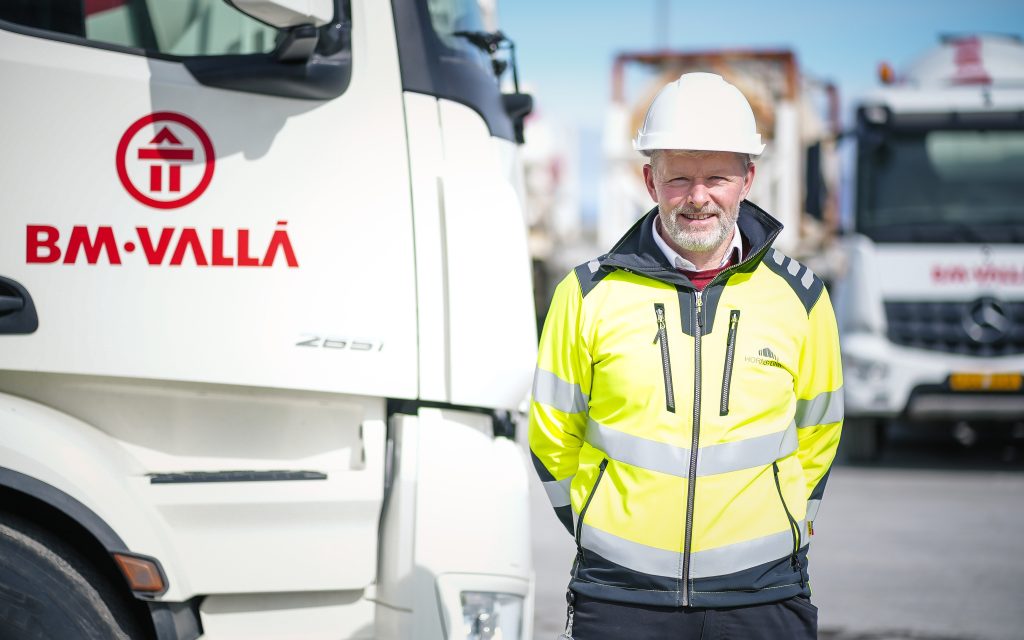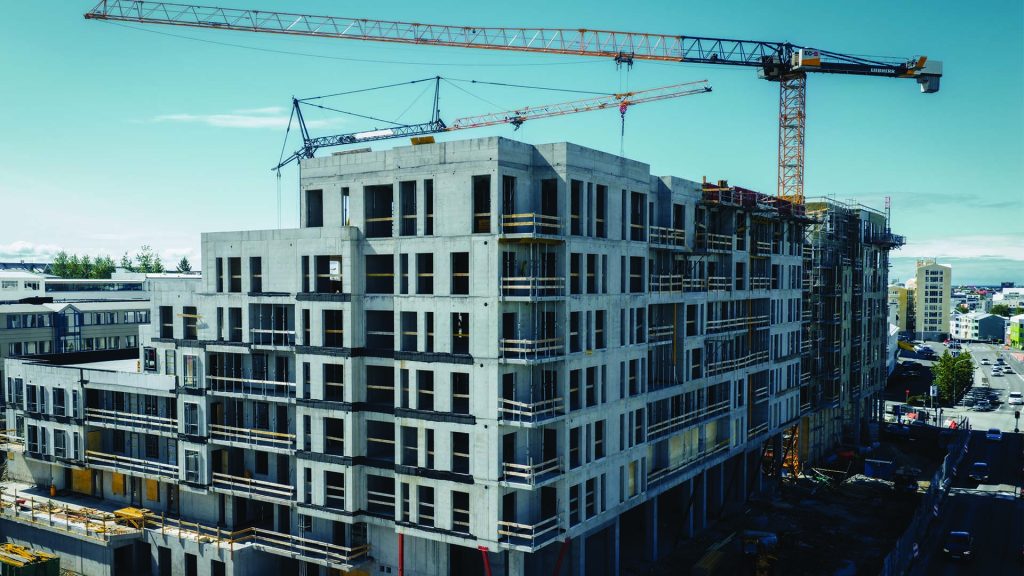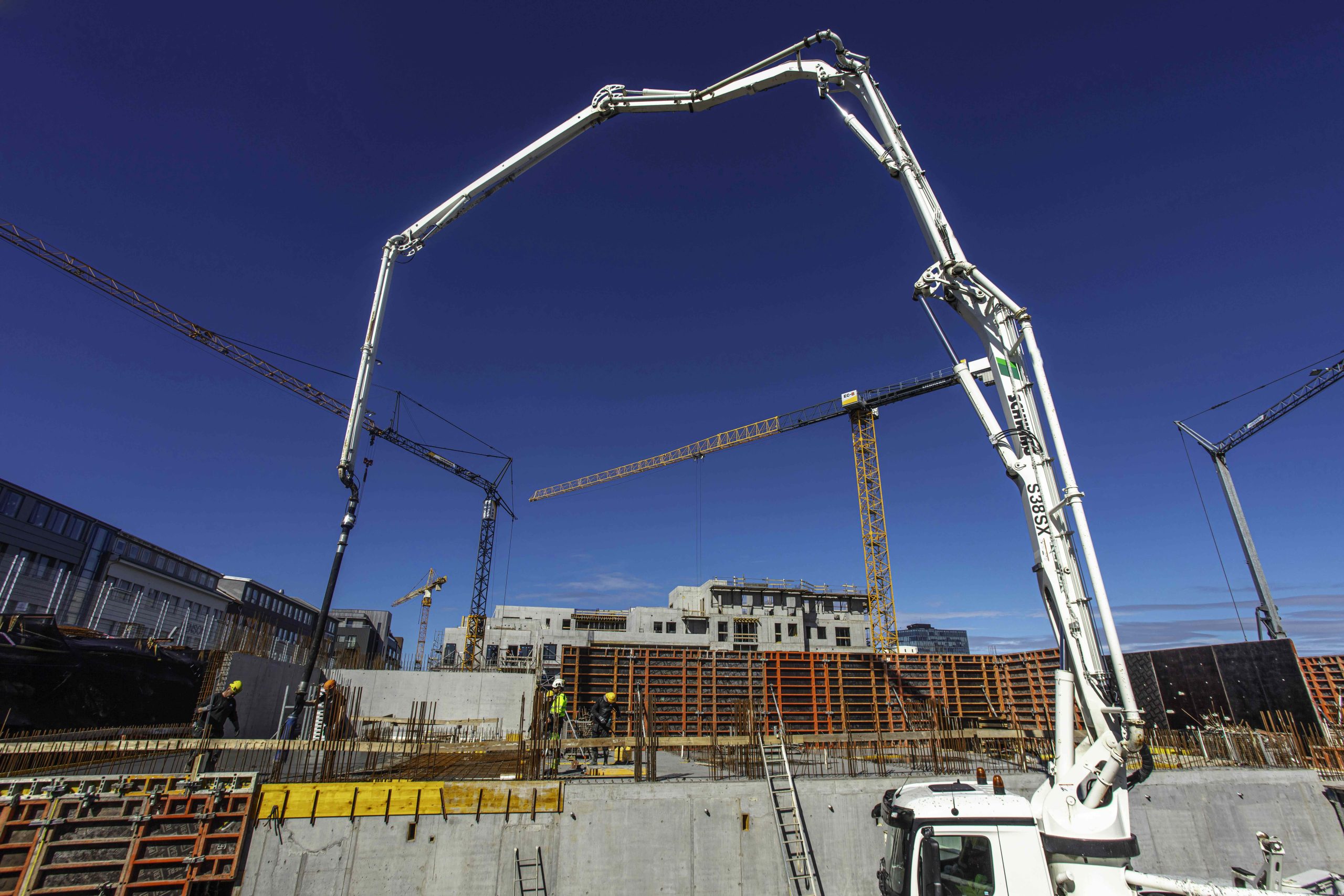BM Vallá makes building materials for civil engineering, including concrete, precast building components, slabs, and masonry products.
CEO Þorsteinn Víglundsson says the company already had several advantages that facilitated the change to making Berglind concrete.
“The Scandinavian part of the producer Heidelberg Materials is the majority owner of the company group that BM Vallá belongs to.
Read the story in Norwegian on Arbeidsliv i Norden
“That company has prioritised climate action for many years, for example with CO2 capture and storage in Brevik in Norway, which began last summer. That project will have a major impact on the carbon footprint of their cement production.”
In 2020, BM Vallá set a goal for becoming carbon neutral within the next decade, reflecting both the climate targets of Heidelberg Materials and the opportunities created by their partnership.
“We believe, first and foremost, that it is a social responsibility to do everything we can to reduce carbon emissions,” Víglundsson says.
“At the same time, consumer demand for climate-friendly products will only grow. Younger generations are more conscious of these issues when investing in their homes than, for example, my own generation. And that is very positive.
“On top of that, we are constantly seeing new construction methods that offer a lower carbon footprint than traditional cement and concrete. So it became clear to us that this would have to be a major focus of our work over the next decade.”
Cement represents 8 per cent of carbon emissions
Víglundsson also points to another factor – the EU Emissions Trading System (ETS), which charges companies for carbon emissions and is expected to fully impact the cement industry within the next few years.
This, he says, creates strong incentives to cut emissions, which he thinks is good.
“Cement is responsible for around 8 per cent of global carbon emissions. It is the most widely used building material in the world.

“About half of those emissions come from the chemical reaction that occurs when limestone is heated during cement production. So the majority of the industry is now working to reduce emissions from that process.”
Since roughly 85 per cent of BM Vallá’s emissions come from cement, that was the natural place to start. Although BM Vallá does not produce the cement itself, the company considers the associated emissions part of its own footprint.
The first step, Víglundsson says, was to change the type of cement used in production.
“We mainly used a rather pure cement with no additives, known as CEM 1. Today, however, about 90 per cent of the cement we use is CEM II, which contains more supplementary materials. That single change reduced our carbon footprint by 20 per cent.”
Cutting cement use
The next step was to find ways to reduce cement use in production.
“This required close collaboration with designers and clients,” Víglundsson explains.
“Buildings are often overdesigned, or the concrete used in the building is stronger than necessary. For instance, there is no need for weather-resistant concrete on interior walls, but it has been used out of habit, based on problems in older buildings that have since been resolved.
“So we have carefully reviewed many ways to use less concrete without compromising quality. This approach has led to some interesting projects where we have lowered the carbon footprint of buildings by 40 to 45 per cent.
“And to be clear, we are not reducing building safety in any way – we are simply rethinking how materials are used to cut emissions.”
Such a major change in production naturally requires significant effort and investment. Yet Víglundsson believes it is necessary, not only for the climate but also for business.
“If the cement and concrete industry does not reduce its carbon footprint, it will have negative consequences, as people will turn to alternative solutions considered more practical. That is why it is crucial to find solutions that work in this regard.”

The reactions have been positive, according to Víglundsson.
“This change has not affected client costs. The market is still not at a point where consumers consider carbon emissions a major factor when choosing a provider, but it is gradually moving in that direction.
“We are beginning to see contractors note environmental considerations in their project descriptions. For example, in a new apartment building in downtown Reykjavík, we reduced the carbon footprint by 40 per cent.
“In that project, we focused heavily on minimising material waste, recycling, and similar measures. We are still learning, and while it requires some initial investment, the results have been encouraging.
“I estimate that our carbon footprint is currently 25 to 30 per cent lower than the construction market average, and we expect further improvements in the coming years.”
Stones from leftover concrete
Reducing carbon emissions from concrete itself is not the only measure BM Vallá has taken on its path to carbon neutrality.
“We have placed a strong emphasis on waste management to minimise waste,” Víglundsson explains.
“For example, we produce stones from leftover concrete. This material must be used within a few hours of production, so there is always some leftover, which we recycle into stones.
“We also have special concrete refineries within our production process, allowing us to return leftover material and reuse water in the next day’s production. Our goal is to minimise the amount of material sent to landfill.”
He adds that the company has significantly reduced waste through recycling and ensures that it is incorporated into one of its products.
“Recycling and sorting have increased considerably across the company over the past three years, both in production and in our offices.”
BM Vallá is also experimenting further with waste management in its new offices.
“We recently moved our sales offices into a new building made of precast units – our first so-called ‘recycled house.’ We see this as a perfect experiment.
“One of the challenges in construction is that when modifications are needed in an existing building, too often a bulldozer is brought in to demolish the house entirely, requiring a rebuild from scratch.
“With this house, however, we can relocate it, modify its shape, build around it, and make other changes. It is far more flexible than a conventional concrete building.
“Over the next five years, we plan to move the house and rebuild it elsewhere, which will give us real-time insights into how this approach works.”
Giving an old firm new life
Víglundsson says the experiment with the recycled house has already taught the company a great deal.
“We had to redesign the building and rethink how pipelines, insulation, roofing, and other elements were installed. The goal is to make it as easy as possible to dismantle and move the house. We also focus on reusing components, such as casts that can serve as cladding.”
He adds that BM Vallá is on track to achieve carbon neutrality by 2030.
“With the project that started in Brevik in Norway last summer, we have for the first time been able to deliver cement that is close to carbon neutral.
“This is a huge change. We are in discussion with several clients to offer carbon-neutral cement for buildings. Concrete accounts for 30 to 40 per cent of a building’s lifetime emissions, so eliminating that makes a significant difference.
“Whether we reach full carbon neutrality by 2030 remains to be seen, but we will do everything in our power to achieve it. At the very least, we now have the opportunity to construct carbon-neutral concrete buildings.
“These are currently more expensive than standard buildings, but we expect costs to balance out once the ETS system is fully implemented and carbon emissions are no longer free. These are exciting times.”
Víglundsson says that these changes have sparked a new life in the long-established company, which was founded in 1956.
“We are now fully focused on innovation rather than just being a typical concrete producer.
“Instead of doing things the way they’ve always been done, we are rethinking production methods to reduce carbon emissions. I enjoy shaking things up a bit, and this has transformed the way we approach our work.”





